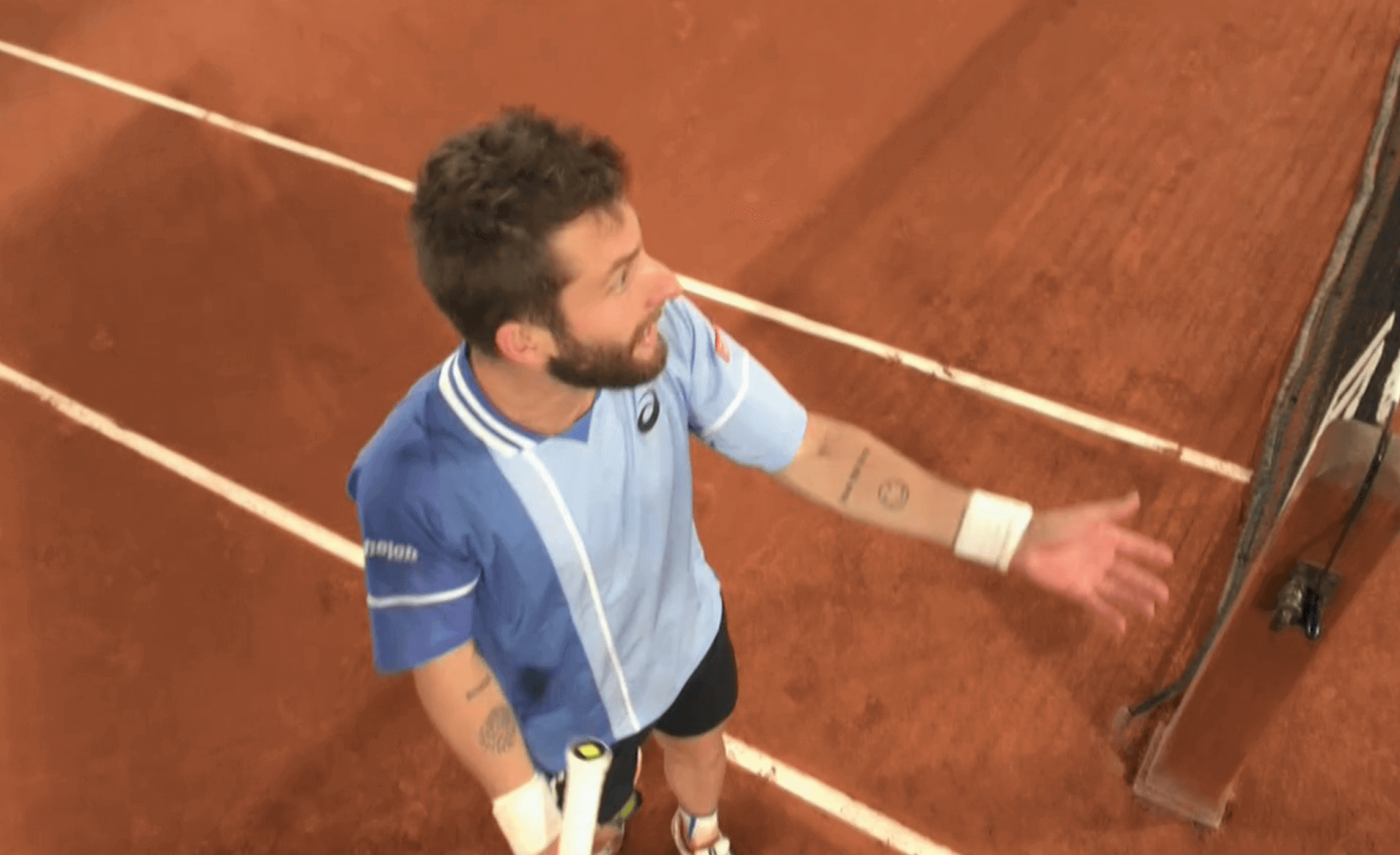In a recent match between Carlos Alcaraz and Sebastian Korda at the French Open, a new camera angle appeared, offering viewers a close-up swivel view of the action from the side of the court. This innovative camera, worn by umpires, was intended to provide never-before-seen footage of the players’ movements and the ball’s trajectory. However, the initial purpose of capturing forehands zipping over the net at high speeds did not translate well for television coverage. Instead, the technology was rerouted to focus on showing the marks that umpires inspect to determine if a ball is in or out.
The introduction of the umpire-head camera was met with mixed reviews from players, commentators, and fans. While the camera provided a unique perspective on the challenges and decisions faced by umpires during matches, it also exposed the intense interactions between players and officials on the court. Some players, like Corentin Moutet, were seen pleading their case to umpires with varying degrees of frustration, giving viewers a glimpse of the emotional intensity of professional tennis matches. The camera also served as a security blanket for umpires, allowing them to provide context and clarity in their interactions with players and commentators.
In other sports, point-of-view coverage has been successful in offering viewers a deeper understanding of the speed and complexity of the game. While the court-level camera in tennis captures the intensity of players’ ball striking, the umpire-head camera aims to showcase the intricacies of umpiring decisions and tasks. However, the current camera setup has faced challenges in providing a clear and engaging view for fans and players. Improvements in camera design, battery life, and settings are needed to enhance the viewing experience and to better illustrate the complexity of the umpiring process.
Despite its limitations, the umpire-head camera has the potential to revolutionize the way tennis matches are broadcast and analyzed. By showing viewers the behind-the-scenes tasks and decision-making processes of umpires, the camera adds a new layer of transparency to the sport. It also serves as a valuable tool for aspiring umpires to learn and understand the nuances of officiating at the highest level. As the technology continues to evolve, it may be adopted on other courts and tournaments, offering fans a more immersive and informative viewing experience.
Overall, the unintended consequences of the umpire-head camera have sparked discussions and debates within the tennis community. While the initial goal was to capture dynamic footage of fast-paced matches, the camera has instead provided a revealing look at the interactions between players and officials. As technology advances and adjustments are made to enhance the viewing experience, the umpire-head camera has the potential to become a valuable tool for both broadcasters and fans, offering a unique perspective on the game of tennis.


